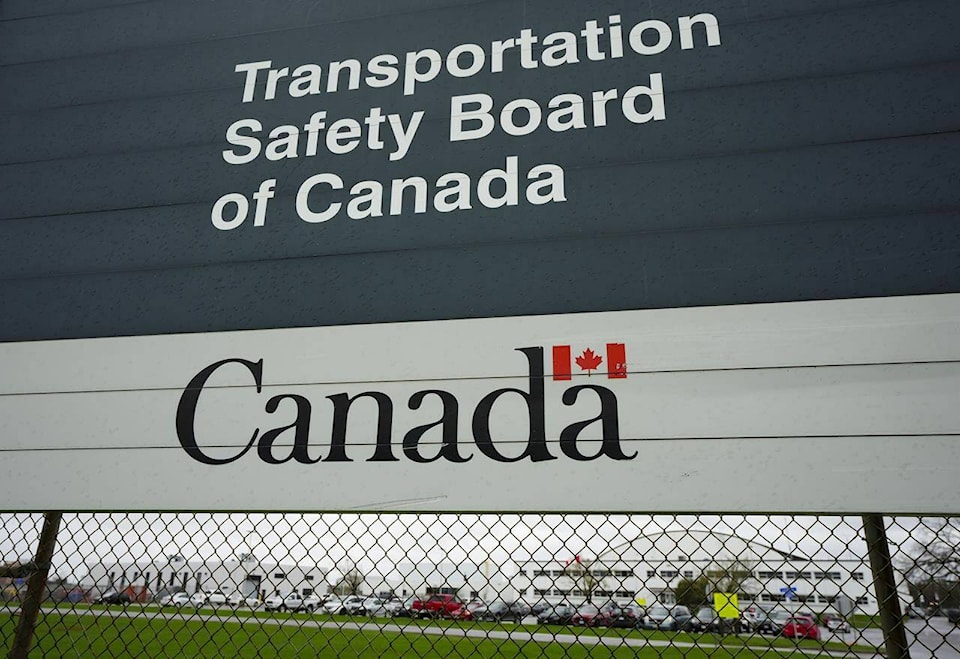The Vancouver Fraser Port Authority says it is “certainly possible” that rules surrounding seaplanes operating in the city’s downtown harbour could change in light of an aircraft colliding with a pleasure boat on takeoff over the weekend.
Sean Baxter, the authority’s acting director of marine operations, says they’ve been advising boats to steer clear of the aircraft operation zone in Coal Harbour for many years, but it’s ultimately up to boat operators to “decide whether or not they go in.”
His comments come as an air traffic control recording reveals the pilot of the Harbour Air float plane was cautioned just before takeoff about a westbound boat coming into the flight path.
While the audio has been removed by the Air Traffic Control website archive, several media outlets have obtained the recording of the controller saying, “takeoff northwest at your discretion,” and the pilot acknowledges him.
The crashed happened Saturday in Coal Harbour, with videos posted online showing the seaplane skipping over top of the vessel, ripping off the boat’s windshield and awning, and then slamming nose first into the water.
Baxter says the aircraft operation zone in Coal Harbour has a number of rules in place, including a 5-knot speed limit for boats, but there are no physical signs warning boaters of the zone’s boundaries beyond two lights marking its northern borders and a buoy in the southwest.
The Transportation Safety Board says crews will recover and examine the wreckage of the sunken plane in the next few days, and investigators have already begun interviewing witnesses.
Pacific Seaplanes president Randy Hanna, who has spent his four-decade career logging 20,000 flying hours primarily flying seaplanes, says the crash is shocking because of the sterling safety record in Vancouver harbour despite it being among the most complex marine traffic environments in the world.
“It’s one of the best-run marine and aviation environments quite possibly in the world, with really a minimum of incidents over many, many years,” Hanna says. “And that’s attributable to both Transport Canada and the Canadian Coast Guard, and Nav Canada on top of that operating the control tower.”
Unlike Victoria’s waterfront, where a runway zone is clearly outlined, landing and takeoff paths in Vancouver’s Coal Harbour are more loosely defined within the aircraft zone, and vessels are free to enter and exit as they see fit, Hanna says.
“Many, many times I’ve been advised that there’s a couple of high speed vessels, perhaps a Sea-Doo or something at high speed, crossing this area to that area,” Hanna says of his experience taking off from Coal Harbour.
“I’ve sat myself there for five or 10 minutes waiting to go because (the water) was just too rough or too crazy, or too many boats or whatever the factors are. And then when it’s safe to do so, you request clearance and on tower’s advice, off you go.”
Hanna says landing and takeoffs at Coal Harbour are ultimately at the pilot’s discretion, and communication and awareness are essential in maintaining a safe operational environment.
Baxter says the aircraft operation zone is clearly shown in every navigational map available for the harbour, and the port authority is taking Saturday’s collision as a chance to remind boaters of safe practices while operating on local waters.
He says boaters are advised to listen for nearby aircraft and be prepared to move out of the way on short notice, while some planning ahead of the trip doesn’t hurt, either.
“You should be consulting official publications before you go on the water, including the nautical charts that clearly mark areas like the seaplane operations area,” he says.
“We tell people to watch out for large, deepsea vessels as well as seaplanes. Those are two examples of port users that have limited visibility … (and) they cannot move quickly, especially in confined waters like narrow channels. We tell people not to assume that they have the right of way when interacting with deepsea vessels as well as the planes.”
Baxter says additional changes to how the port authority approaches regulations at the Coal Harbour aircraft zone will depend on what the Transportation Safety Board recommends in its investigation.
“Typically, the TSB will offer recommendations to any number of government agencies, and the port authority could be included in that,” he says. “And if there are recommendations around how to enhance safety in an area like … Coal Harbour, we’re certainly keen to listen to those and implement them as required.”
READ ALSO: Float plane, boat collide in Vancouver’s Coal Harbour; 2 people injured

